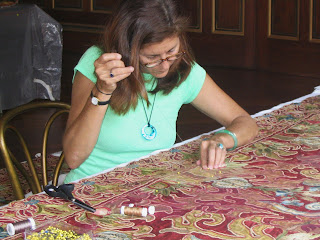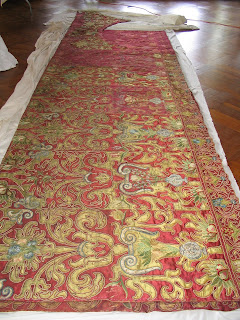Wednesday, November 30, 2011 -  illicit cultural property,public policy,RAND Europe
illicit cultural property,public policy,RAND Europe
 No comments
No comments
 illicit cultural property,public policy,RAND Europe
illicit cultural property,public policy,RAND Europe
 No comments
No comments
RAND Europe: "Assessing the illegal trade in cultural property from a public policy perspective"
RAND Europe has publicly published online, "Assessing the illegal trade in cultural property from a public policy perspective", a report by by Siobhán Ní Chonaill, Anaïs Reding, and Lorenzo Valeri:
"The aim of this research is to explore new ways of curtailing the illegal trade in cultural property. Despite a range of legislative and policy interventions, the trade in illicit art and antiquities continues to flourish, resulting in damage to the arts, scholarship and heritage. Through an exploration of existing intervention tools, two case studies and a set of key informant interviews, this study demonstrates the existing difficulties in curtailing the market in cultural property and explores the potential for new policy interventions. More specifically, we map the supply chain for the illegal trade in cultural property and explore the failures of current policy interventions through two case studies, the Medici trading cartel and the Beit collection robberies. On this basis, we prioritise policy interventions to contain the illegal trade in cultural property according to the applicable stage of the supply chain phase (supply, transfer or demand) and the associated priority level (low, medium or high)."
Readers may access this report here. RAND Europe is an independent not-for-profit policy research organisation.
The authors propose that in addition to coordinating policing internationally and improving security at cultural institutions that meet the seriousness of the current problem, that a central database is essential. They write:
The authors propose that in addition to coordinating policing internationally and improving security at cultural institutions that meet the seriousness of the current problem, that a central database is essential. They write:
"In order to prevent situations whereby individuals or galleries purchase stolen art in good faith, there is a need for a legal mandate that for all prospective buyers to consult a central registry of stolen art. Although a number of different databases of stolen art are in existence, there is no one central registry used by all parties in the legal art trade. By ensuring greater diligence in the maintenance and use of a central international database, the number of good faith purchases of stolen art could be reduced. This would have the additional effect of making it more difficult for illegal traders to sell stolen works of art, making the enterprise less attractive overall."At the UNESCO meeting commemorating the 1970 Convention in Paris last March, conference delegates also said that a central database was important. How and who's going to be in charge and finance it seems to be the question. The Art Loss Register offered its services, but not everyone seemed comfortable with a private company providing a database.


















